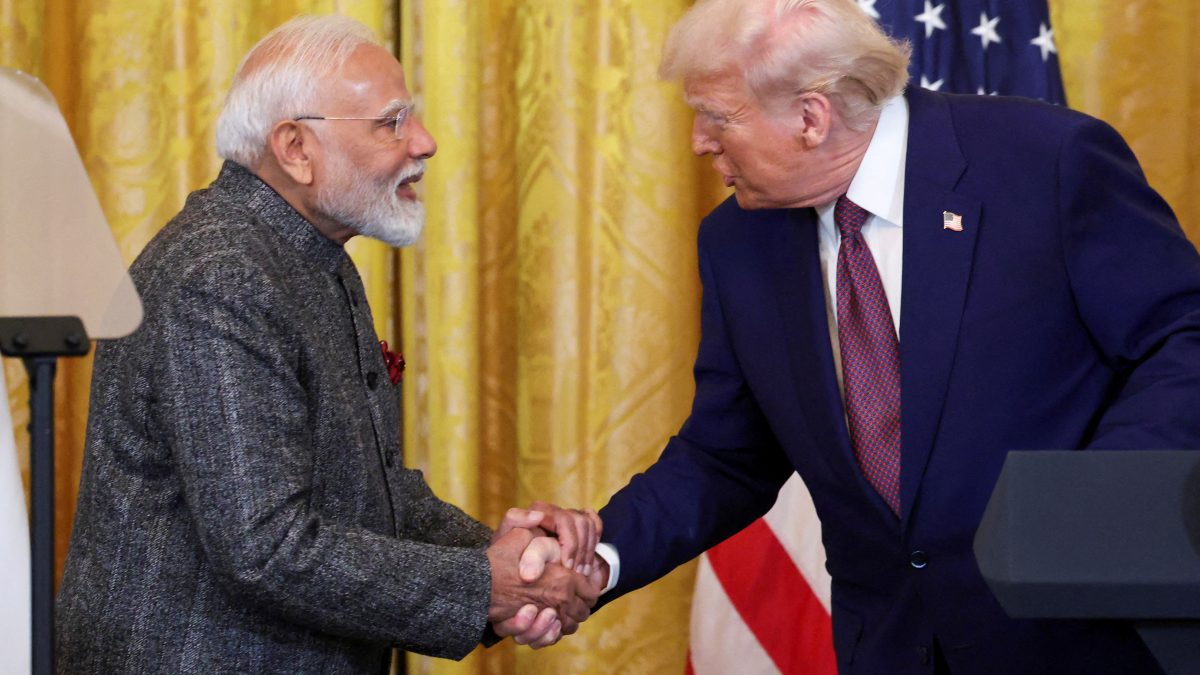US President Donald Trump on Thursday lashed out at India’s ties with Russia, branding both countries’ economies as “dead” and blaming India’s “obnoxious” trade practices for a lopsided bilateral relationship.
His remarks came just a day after he slapped a 25 per cent tariff on Indian imports, citing high tariffs and trade barriers from New Delhi.
“Remember, while India is our friend, we have, over the years, done relatively little business with them because their Tariffs are far too high, among the highest in the World, and they have the most strenuous and obnoxious non-monetary Trade Barriers of any Country,” Trump said, citing a “massive” trade deficit with India.
While Trump accused India of stifling trade, a tit-for-tat response from New Delhi could threaten key US exports that generate billions annually. In 2024 alone, India imported around $42 billion worth of American goods, nearly half of which came from just a handful of categories.
Here’s what the US exports to India and where it could hurt most:
Top US exports to India that may face retaliation
Mineral fuels & petroleum – $12.9B: Crude oil, LNG, petroleum coke, critical for India’s energy sector. India could shift to alternative suppliers like Russia, the Middle East or Latin America.
Precious stones & metals – $5.3B: Gold, diamonds, and metals vital for Indian jewellery exports. India has ample alternative markets in Europe, Africa, and the Gulf.
Machinery – $3.3B: Industrial and energy machinery. China, Germany, Japan and South Korea remain viable alternatives.
Aircraft & spacecraft – $3.0B: Used in India’s aviation and defence sectors. European manufacturers are already courting India as the US turns protectionist.
Impact Shorts
More ShortsElectronics – $2.2B: India’s booming electronics sector can easily pivot to Chinese and Southeast Asian suppliers.
Medical equipment – $2.0B: High-end diagnostic tools vital to Indian healthcare, but pricing pressures from tariffs may redirect imports to Europe or South Korea.
Plastics – $1.4B: Used across packaging and manufacturing sectors.
Edible fruits & nuts – $1.2B: Almonds, pistachios, and walnuts—major US exports vulnerable to price-sensitive Indian buyers.
Organic chemicals – $1.1B: Used in pharma, chemicals, and agri-sectors. India may explore ASEAN or EU options.
Iron & steel – $860M: Needed for construction and manufacturing, but India already has cheaper suppliers.
Why Trump’s gamble may backfire
India, now the fourth-largest economy, has become a vital market for US businesses. Slapping tariffs risks alienating a high-growth trade partner, especially as India diversifies sourcing and moves up the manufacturing value chain. US energy giants, aviation firms, and machinery exporters could face steep losses if New Delhi retaliates—and India has no shortage of alternative suppliers.
Trump may see tariffs as leverage, but in this case, he may just be handing the advantage to America’s global rivals.


)

)
)
)
)
)
)
)
)



